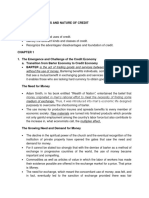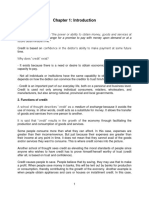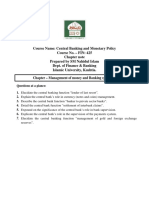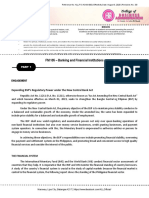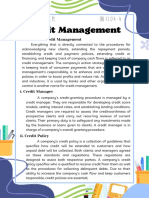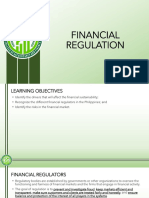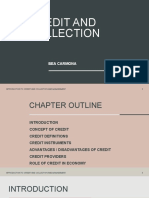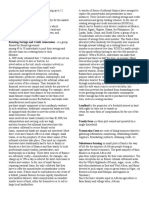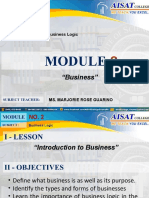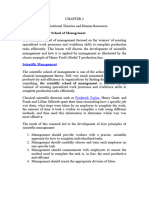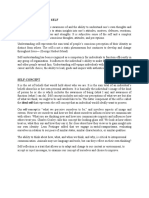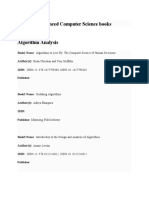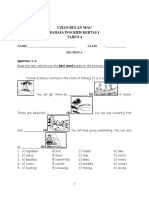The Development of Credit
Pre-Spanish Time
The Philippines had been trading with foreign countries such as China, Japan, Sumatra,
India, Arabia, Siam, Borneo, Java, the Moluccas and other East Indian islands, when the Spanish
conquerors arrived. The barter system then was used in the conduct of trade with the foreigners.
The Filipinos exchanged their native products, such as cotton, pearls, betel nuts, sinamay fiber, and
the like with the foreigners, for porcelain, silk, ivory. Filipino traders were famous for their honesty
and excellent credit record.
Spanish Time
During the initial years of Spanish rule, free trade was encouraged. The goods of the Far
East were marketed to America through Manila and then through Acapulco, Mexico. Manila was
still then the center of trade and commerce in the Orient. Subsequently, however the Spain adopted
a policy of trade restrictions in the prevailing concept of mercantilism in Europe. A product of
mercantilistic policy in the Philippines was the Galleon Trade. Most of those who participated in
the galleon trade secured their loans from the pias.
American Era
Agriculture remained undeveloped under the Spanish regime. The American government,
however gave priority to its development. The American administrators introduced a better banking
and credit system to promote economic development, especially in the rural areas. Among the
credit programs of the government was the organization of the first agricultural bank in 1908 for
the benefit of the farmers. In 1915 the Rural Credit Law was enacted to complement the
agricultural cooperatives, particularly credit associations in every town all over the country.
Rice and Corn Fund was established providing 1 million for loans to the farmers` credit
cooperatives.
Philippine National Bank was established in 1916.
The organizations of rural banks and agricultural credit associations were encouraged by the
government.
Only seven credit associations and two rural banks were actually organized.
The failure of the credit program was caused by a combination of several factors:
1. Farmers did not have steady income due to the destruction of their crops by natural
calamities.
2. They were exploited by the landlords who give them unfair share in the harvest. Thus, it
was really possible for them to pay their loans.
3. The negative attitudes of the borrowers toward their debts influenced their refusal to settle
their financial obligations.
4. They considered their loans as another form of dole outs and therefore they did not feel the
responsibility of paying the government lending institutions.
Under the Republic
The scars of World War II were still conspicuous when the Philippines became a republic on
July 4, 1946. It was a period of reconstruction and rehabilitation. The national economy and the
people greatly needed money for business and economic development. In response to the credit
needs of the country, the Rehabilitation Finance Corporation was established on October 29, 1946.
In 1958, the Rehabilitation Finance Corporation became Development Bank of the
Philippines. A very significant improvement in the financial system was the establishment of the
Central Bank of the Philippines in 1949. Since then, monetary policies have been fashioned to
improve production, employment and quality of life of the people, especially in the rural sectors
where poverty has been more widespread. In later years the government encouraged the
organization of savings and loan associations, rural and cooperative banks.
Meaning
Credit is a term derived from the Latin word credo – meaning, to believe, to trust. As
applied to this subject, credit means securing something of value, whether tangible or intangible, in
�return for a promise to pay at some determined future date. The first principle therefore of credit is:
Do not give Credit to anybody you do not trust. Trust is the fundamental element of credit.
Others define credit as follows:
1. Credit is purchasing power (Mill)
2. The essence of credit is confidence on the part of the creditor in the debtor`s willingness
and ability to pay his debt. (Holdsworth)
3. Credit may be called a “short sale” of money (Johnson)
4. Credit is a “sale of trust”
5. The exchange of an actual reality against a future probability (Le Vasseur)
6. Credit may be defined as the power time in return for investment or services at a future
date. (Bullock)
7. Credit is the personal reputation a person has, in consequence of which he can buy money,
or goods, or labor, by giving in exchange for them a promise to pay at a future time. (Mac
Leod),
8. Credit is the power to obtain goods or services by giving a promise to pay money (or goods)
on demand or at a specified date in the future. (Johnson)
9. A credit is the present right to a future payment. (Mac Leod)
Advantages of Credit
1. Credit facilitates and contributes to the increase in wealth by making funds available for
productive purposes.
2. Credit saves time and expense by providing a safer and more convenient means of
completing transactions.
3. Credit helps expand the purchasing power of every member of the business community –
from producers to the ultimate consumer.
4. Credit enables immediate consumption of goods thereby providing for an increase in
material well-being.
5. Credit helps expand economic opportunities through education, job training and job
creation.
6. Credit spreads progress to various sectors of the economy.
7. Credit makes possible the birth of new industries.
8. Credit helps buying become more convenient for customers.
Disadvantages of Credit
1. Credit, at times, encourages speculation.
2. Credit also tends to contribute to extravagance and carelessness on the part of people who
obtain it. Since the person who obtains credit is not using his own money but is using the
money of other person, he is therefore charged with an obligation of the highest order.
Many do not understand such social responsibility. As such many fails to appreciate that
trust.
3. Because of credit, many entrepreneurs’ resorts to over expansion. Failure to generate
expected income can only cause a collapse which affects the nation`s economy.
4. Owing to the observation that business can be expanded or contracted rapidly through the
use of credit, businessmen are not only susceptible but eventually succumb to an air of
confidence or pessimism. Credit causes one businessman to be dependent upon others. In
order to extend credit, he must have faith in other businessmen and also in the future. Thus,
it follows that if credit relations become strained, man business recession may set in.
FOUNDATIONS OF CREDIT
1. Creditors must have absolute confidence in the personal character and in the ability as well
as willingness of their debtors to accept, honor and settle their obligations.
2. Proper facilities must exist for performing credit operations.
3. The money standard must be stable.
4. The government must stand ready to assist the creditor in enforcing payment of loan
extended to the debtor.
CLASSES AND KINDS OF CREDIT
�1. The classes and kinds of credit according to its purposes are:
a) Commercial credit, which includes the promise to pay off businessmen for the funds they
borrowed in the purchase of goods for productive or profitable ventures. These are the
merchants, distributors and manufacturers.
b) Agricultural credit, which includes the promise to pay off farmers and farm organization
for the funds they borrowed in the acquisition of farm inputs.
c) Investment credit, the promise to pay off individuals or business firms for the loans they
obtained in buying capital goods.
d) Consumer credit constitutes all the obligations to pay off people for the money they
borrowed for consumption purposes.
e) Speculative credit, a type of credit which is used for dealing in securities or goods with the
intention of making a profit through favorable price changes.
f) Export credit, in some form and to some extent is always involved in all sorts of
transactions for which cash is not paid on or before shipment of goods out of country.
g) Industrial credit is intended for financing the needs of industries like logging, fishing,
manufacturing, and others, and which involves big amounts of money.
h) Real Estate credit, when credit is secured purposely for construction, acquisition,
expansion, or improvement of real estate properties, it is termed as real estate credit.
2. Short-term credit is a loan which is payable in less than one (1) year while long term credit
is a loan whose maturity is from five (5) years or more and intermediate credit is a loan
which matures only in more than a year but less than five years.
3. The following can be used as collateral: land, stocks, bonds, machines, houses, crops and
other valuable properties.
4. Loans, whether secured or unsecured, are risk inherent although the former is less risky.
Although secured loans are backed by collateral, creditors prefer to have cash rather than a
property or set which still needs to be converted into cash.
5. The following are considered private sectors of the economy: individuals, partnerships,
corporations, and other private institutions. A public credit includes all grants of credit to
government whether national, provincial, municipal and its instrumentalities while in
private credit refers to all grants of credits to non-government.

